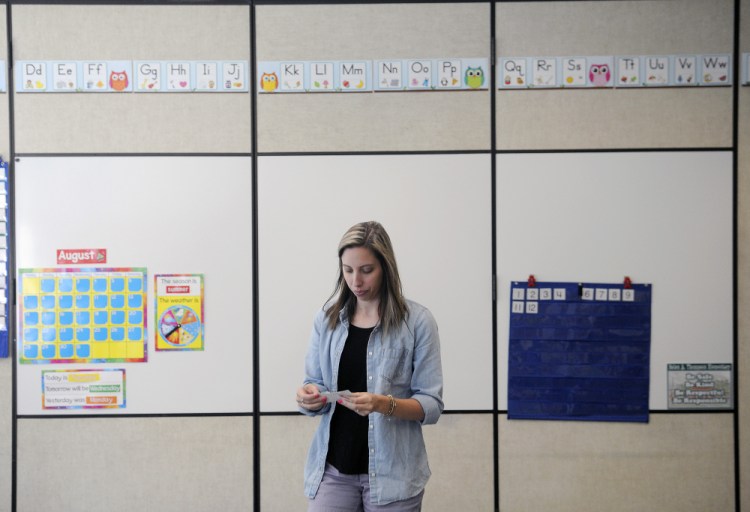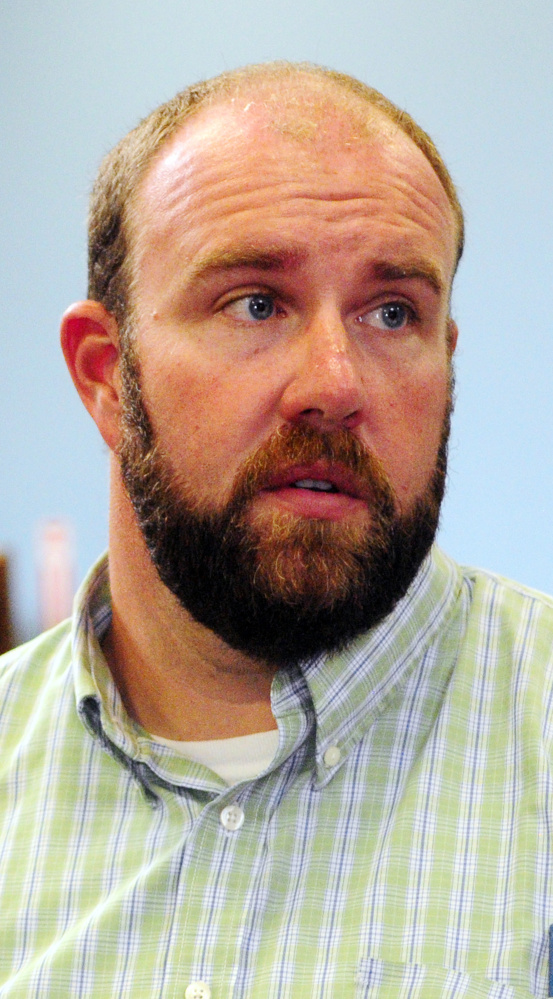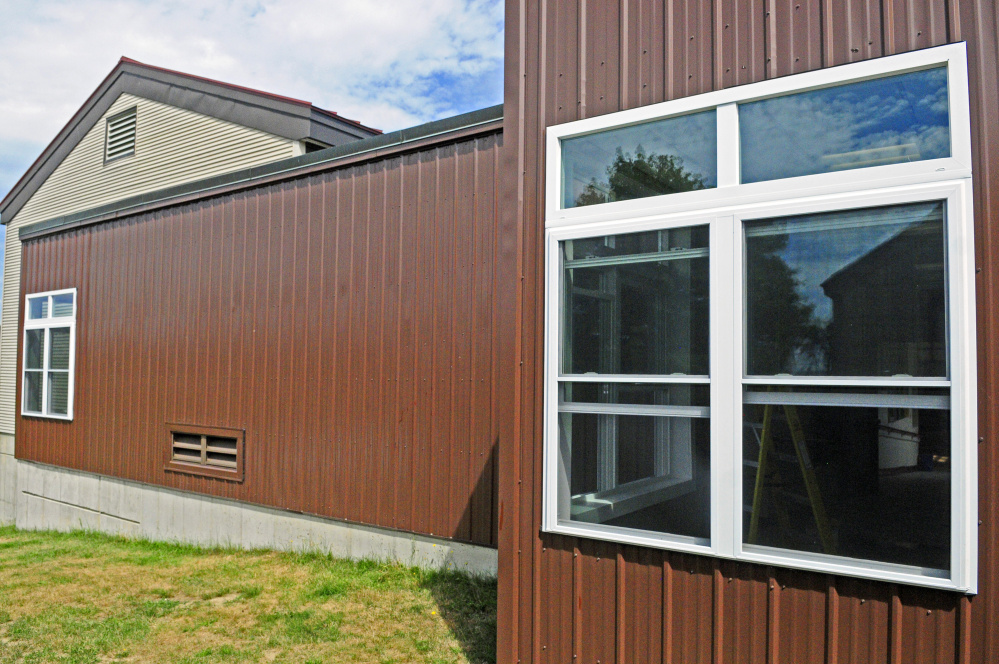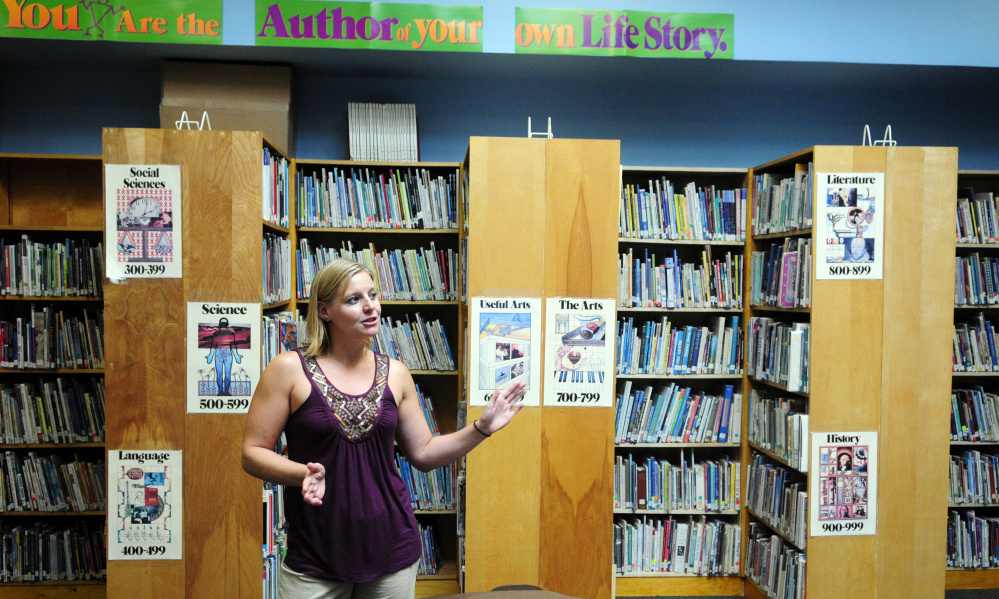Checkout lines at stores such as Wal-Mart, Target and Staples have been packed this week with parents holding baskets filled with pencils, paper, notebooks and binders. The annual markdown of these supplies means that school is about to start.
“My daughter Leah and I have a really fun time every year shopping for her school supplies,” said Amy Jordan, of Gardiner, who on Tuesday morning was at Staples in Augusta. “Though it’s bittersweet, because as each year passes, she grows up more and more.” Her daughter, 8, is going into third grade.
Across the region, districts are putting the finishing touches on summer maintenance projects, filling any remaining open positions and getting schools ready for students’ return this week. Many local schools open for the year on Wednesday, with Augusta students in grades 1-9 returning that day and all other Augusta students returning on Thursday.
Superintendent James Anastasio said the city’s schools are “clean and safe and ready to greet the students.” The district did some regular maintenance including paving, painting and fixing up some bathrooms throughout the summer.
Superintendent Patricia Hopkins, of School Administrative District 11, which includes Gardiner, West Gardiner, Randolph and Pittston, said her district recently completed a $3.8 million contract with Siemens that resulted in the updating and upgrading of boilers and lighting. The district switched to natural gas and installed solar panels in some spots. Hopkins said the money saved will cover the cost of the project, and the district’s operations will be more efficient. She hopes the efficiencies will allow the district to benefit from additional savings in the future.
The district also built a storage unit next to the gymnasium at Gardiner Area High School to help solve equipment problems associated with the music program.
The big project for Regional School Unit 2, according to Superintendent William Zima, is the continued negotiations to build a school in Monmouth. Zima said the district hopes to consolidate Monmouth Middle School and Henry L. Cottrell Elementary School into one building over the next several years. There will be public forums, including one Sept. 15, to discuss the ongoing plans.
“We’ve also been doing typical maintenance and upgrades to our schools, and we’ve replaced some old fire safety doors in Richmond,” Zima said from his office on the Stevens School campus in Hallowell. RSU 2 includes Hallowell, Farmingdale, Monmouth, Richmond and Dresden.
Whitefield Elementary School, a part of RSU 12, had asbestos removed after old, run-down flooring was taken up and replaced with new carpeting. Principal Joshua McNaughton said the crews took every precaution to make sure the asbestos was taken out safely, and he said he hasn’t heard any concern from parents.
The school also updated its library to make it more inviting and comfortable for the students. Bookshelves were re-organized and seating areas were expanded. Beanbag chairs and other comforts will be added throughout the year, librarian Marcie Abbott said.
All three superintendents said their districts nearly have filled all available positions, but all three expressed the same concerns about struggling to find special education teachers, which they said is a statewide, if not national, problem.
“It’s a really, really tough job with a tremendous amount of paperwork, which I think would be mind-numbing,” Zima said. “There will continue to be more kids with special needs, but we have fewer special educators, so what happens?”
Hopkins said a new state law requiring special educators to have full certification upon being hired has made it challenging because districts no longer can offer potential hires a conditional certificate.
Districts also are finding it hard to recruit teachers in specialized areas including mathematics and science, in part because people with those skill sets aren’t looking at a career in education.
“There are better-paying jobs, like in engineering, for someone with those skills,” Hopkins said. “It’s a concern because if we’re struggling now to find qualified professionals, where are we going to be in a few years if the trend continues?”
Hopkins’ district did add several new positions through the budget process, including a new social worker at the high school, a second nurse and a new science, technology, engineering and mathematics — or STEM — teacher. The district also has a new pre-kindergarten-through-grade 2 social and behavioral program to help children at that level learn the social skills they need for the classroom.
Augusta was able to fill the majority of the district’s open positions, Anastasio said, except for a plumbing teaching position at the Capital Area Technical Center.
“But we’re all experiencing the same thing,” he said. “It’s getting more and more difficult to attract people to some specialized areas.”
None of the superintendents has a definitive answer to the question of how education can attract new people to the profession, but they all offer multiple reasons why that task is becoming harder and harder.
“Demands on teachers are increasing every year, and being a teacher is far more challenging now than it ever used to be, because of all the scrutiny and expectations,” Hopkins said. “It detracts from their ability to really focus on classroom instruction.”
Anastasio said teaching isn’t competitive salarywise with other professions, so districts are relying on finding people who are committed to working with students to make a difference.
But with all the social changes and problems facing so many of the region’s students, not the least of which is the opiate crisis, teachers and schools are being asked to do more than just teach.
“We’re providing a lot more social services to students, and we’re doing things educators didn’t do in the past,” Anastasio said. “It’s part of the role of education, but it makes it more difficult to achieve the primary goal of education, which is to educate, because there are so many outside issues kids are facing.”
He said for many students in the Augusta area, school is the most normal and safest place they can be during the day, so students and families are looking to schools for support.
“It’s becoming a place for community service,” Anastasio said, “so we’re partnering with outside agencies to help provide those services to our kids.”
Enrollment hasn’t increased or decreased, the three superintendents said, but the number of students with special needs has increased.
Having to deal with budget cuts should be one of the major requirements listed on any superintendent’s job description. Zima, Anastasio and Hopkins are all impressed by how much their districts can do with such limited and decreasing resources.
“It amazes me how our staff and administration is able to take those minimal resources and really stretch them and go above and beyond to meet the needs of our kids,” Hopkins said.
Zima agreed, saying, “It’s quite amazing what public schools can do with a dollar.” Anastasio said everyone in the Augusta school district does whatever he or she can to provide the best opportunity for students, which is “where we get the best bang for our buck.”
Despite the challenges of increasing social concerns and decreasing budgets, the three superintendents can’t wait for the school year to begin.
“When you walk around in the summer, the schools are just buildings; then that changes when the kids are in there,” Zima said. “There’s so much laughter and excitement, and I love that.”
Jason Pafundi — 621-5663
Twitter: @jasonpafundiKJ
Send questions/comments to the editors.







Comments are no longer available on this story